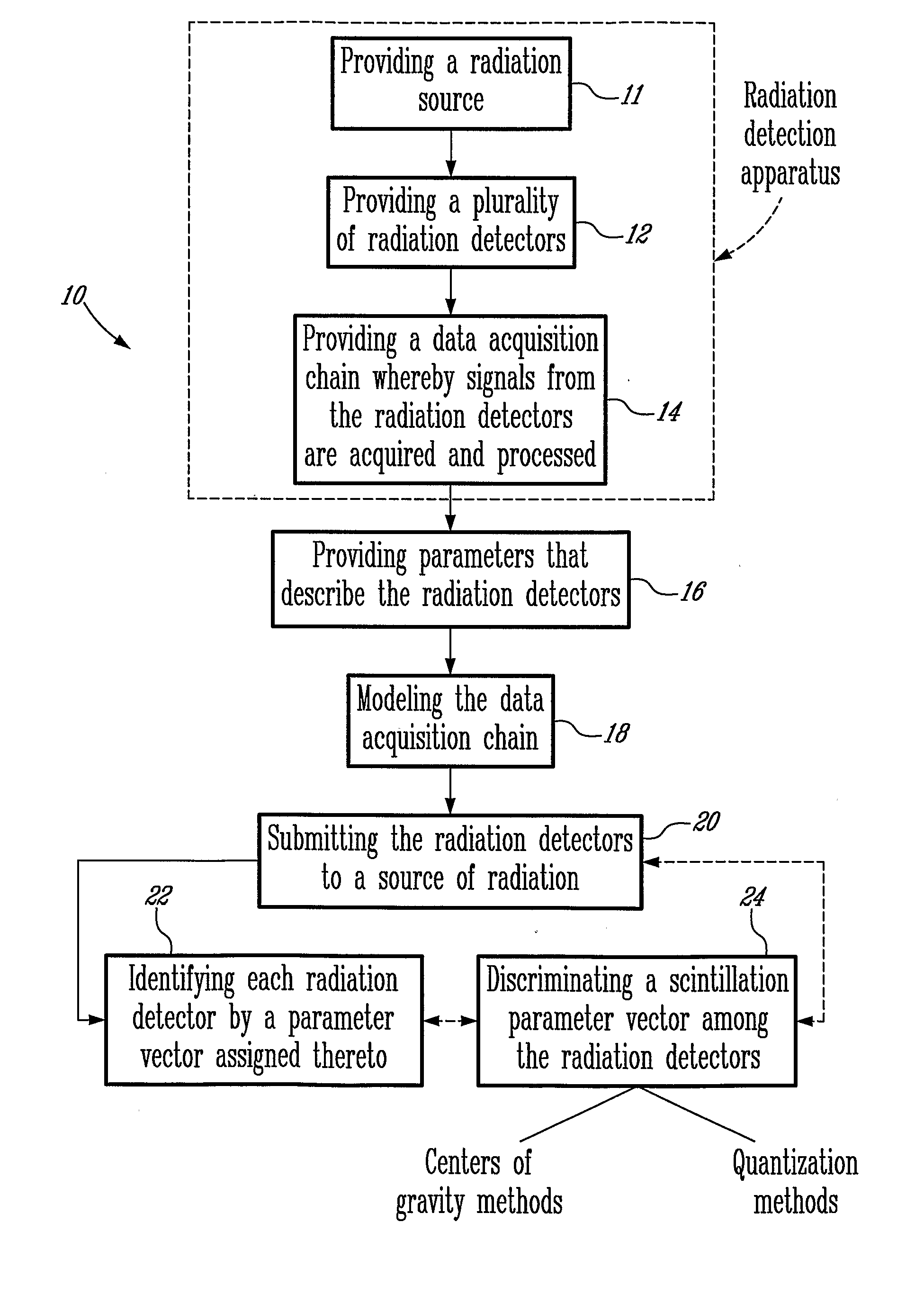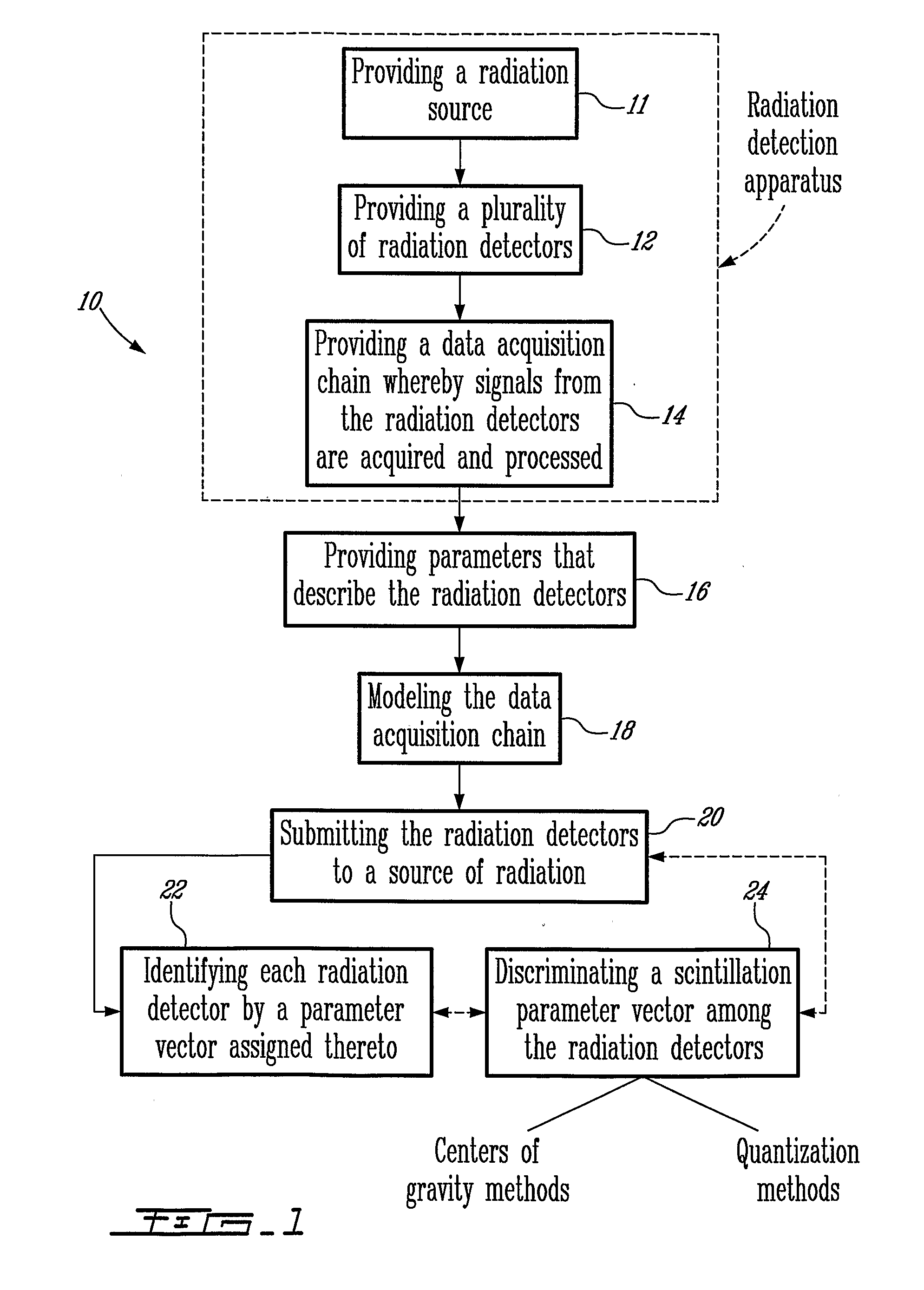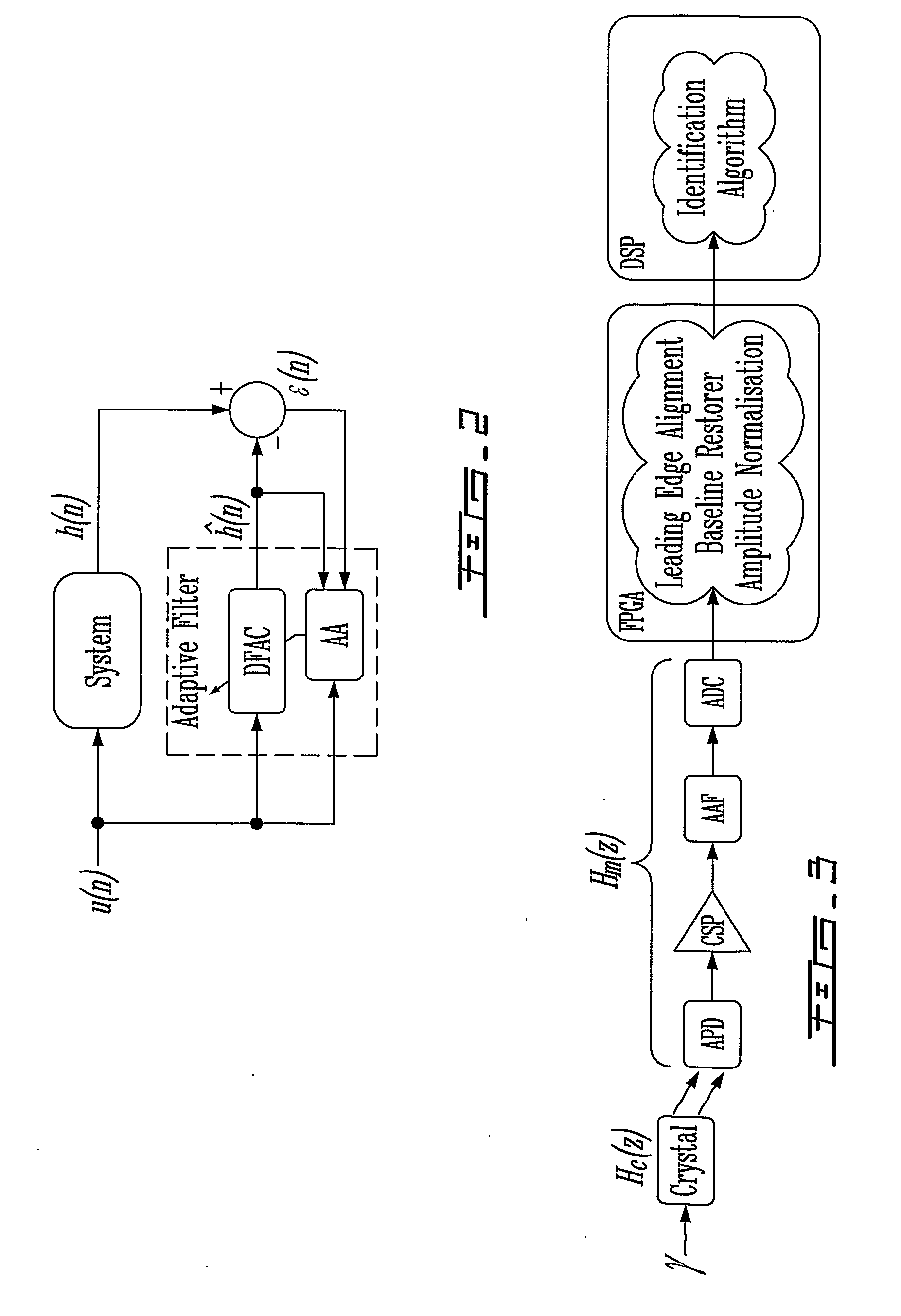Digital Identification and Vector Quantization Methods and Systems for Detector Crystal Recognition in Radiation Detection Machines
a detector crystal and digital identification technology, applied in the field of medical imaging modality, can solve the problems of increasing error, affecting the actual position of detection, and affecting so as to achieve the effect of reducing the uncertainty of detection, reducing the accuracy of detection, and increasing the difficulty of detection
- Summary
- Abstract
- Description
- Claims
- Application Information
AI Technical Summary
Benefits of technology
Problems solved by technology
Method used
Image
Examples
Embodiment Construction
[0025]According to an illustrative embodiment of the present invention, a digital signal processing method and system capable of identifying scintillating crystals among many crystals with different scintillation characteristics in real time in a radiation detection apparatus will now be described. These method and system allow increasing the detector pixel density, and thus the spatial resolution, without increasing the number of electronic data acquisition (DAQ) channels. These method and system can be performed in real time, in a noisy environment and with radiation detectors having fairly similar scintillation characteristics.
[0026]Referring now to FIG. 1, the method 10 is generally described. It is to be noted that the method can be materialized as a system, as (i) a software running on various processors such as digital signal processors as well as embedded microprocessors and microcontrollers, (ii) part of a digital system residing on programmable logic chip(s), (iii) part of...
PUM
 Login to View More
Login to View More Abstract
Description
Claims
Application Information
 Login to View More
Login to View More - R&D
- Intellectual Property
- Life Sciences
- Materials
- Tech Scout
- Unparalleled Data Quality
- Higher Quality Content
- 60% Fewer Hallucinations
Browse by: Latest US Patents, China's latest patents, Technical Efficacy Thesaurus, Application Domain, Technology Topic, Popular Technical Reports.
© 2025 PatSnap. All rights reserved.Legal|Privacy policy|Modern Slavery Act Transparency Statement|Sitemap|About US| Contact US: help@patsnap.com



